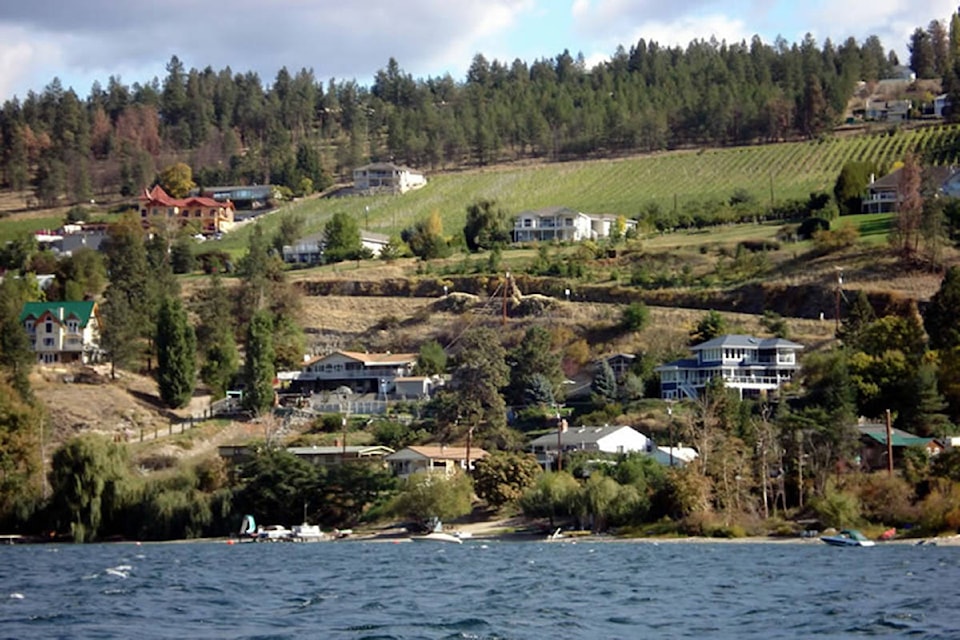Okanagan Lake’s natural shoreline is facing extinction due to development encroachment, according to the latest lake foreshore inventory and mapping analysis.
“Each small change to the natural areas around the lake has a negative cumulative effect on the natural ecosystem to function and provide services such as clean drinking water, water infiltration, flood control and critical habitat for fish and wildlife,” said Jason Schleppe, senior biologist with the Okanagan Lake Foreshore Inventory Mapping study update.
“At the current rate of land development, the natural areas around the lake that are not located in parks or protected areas could be completely lost to development in 40 to 160 years.”
Without any changes, Schleppe added all the unprotected natural shoreline along Okanagan Lake could be lost within the next two generations.
Since the initial shoreline report was done in 2011, 4.1 kilometres or 1.42 per end of the natural Okanagan Lake shoreline was lost or permanently altered.
The key changes to the shoreline’s natural state have included the removal of native vegetation, construction of 165 retaining walls that altered 1.45 km of shoreline, 164 new docks and nine new marinas built, and both more road access and general landscaping.
Lakebed materials were also disturbed along 4.1 km of the shoreline.
Changes to the natural state of the shoreline have been noted in almost every local government jurisdiction:
* City of ��������: about 30 per cent remains in its natural state, compared to 32.6 per cent in 2011. Almost 70 per cent of the shoreline has been disturbed, an increase of 1.5 per cent since 2011.
* City of West ��������: roughly 72.75 per cent of the shoreline has been altered, compared to 71.7 per cent in 2011. This leaves 27.25 per cent in its natural state.
* District of Lake Country: almost 54.5 per cent has been disturbed compared to the 2011 report she it was noted to be 52.1 per cent. According to the 2011 report, 47.9 per cent of the shoreline was in its natural state, which has since dropped to 45.5 per cent.
* District of Peachland: the 2016 report shows just over 16 per cent of the shoreline in its natural form, compared to 16.3 per cent from the previous report. Almost 84 per cent of the Peachland shoreline compared to 83.7 per cent in 2011.
*Regional district electoral areas: 56.9 per cent remains in its natural state, compared to 58.2 per cent in 2011. Last year, 43.1 per cent of the shoreline was recorded as being altered, compared to the 41.8 per cent disturbance level as of 2011.
The report says careful management to maintain natural habitat along the waterfront will be critical to prevent the loss of key habitat for species like kokanee salmon.
Important ecosystems like water filtration and flood protection, may also be permanently lost over time, unless these areas of remaining natural habitat are protected and disturbed shoreline is enhanced.
“The foreshore has a significant ecological, cultural and economic values, and is extremely sensitive to disturbances,” said Scott Boswell, program manager for the Okanagan Collaborative Conservation Program.
“Loss of these key values would impact the local economy, and the health and well-being of the communities in the region.”




